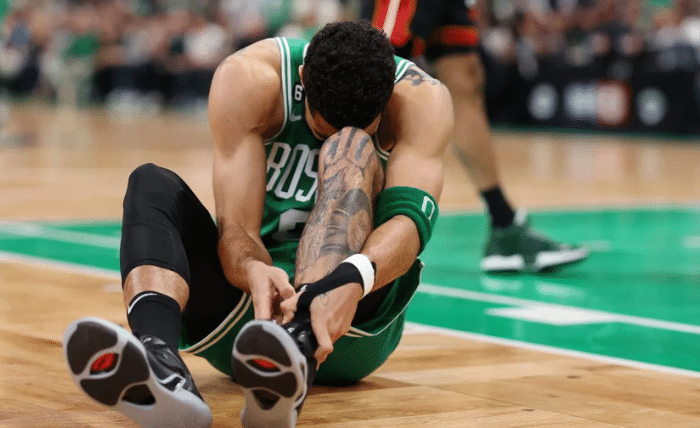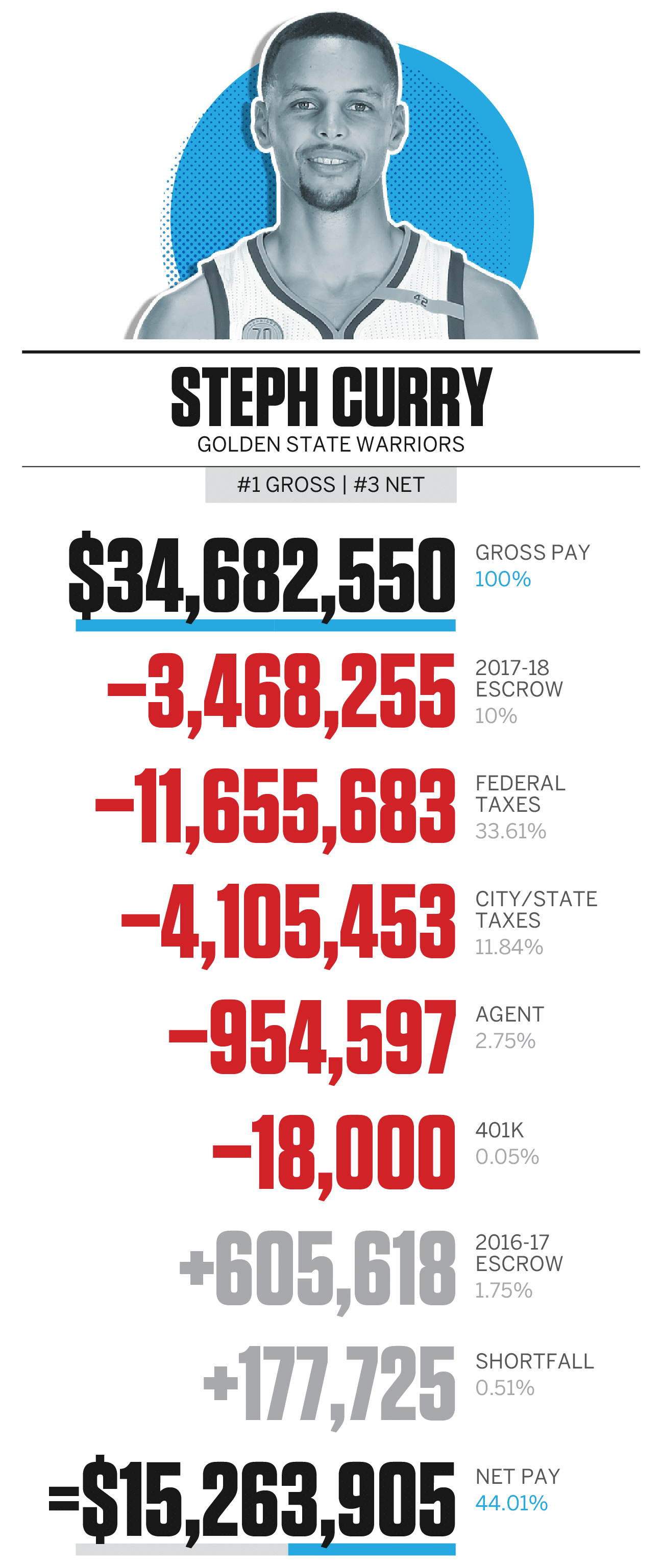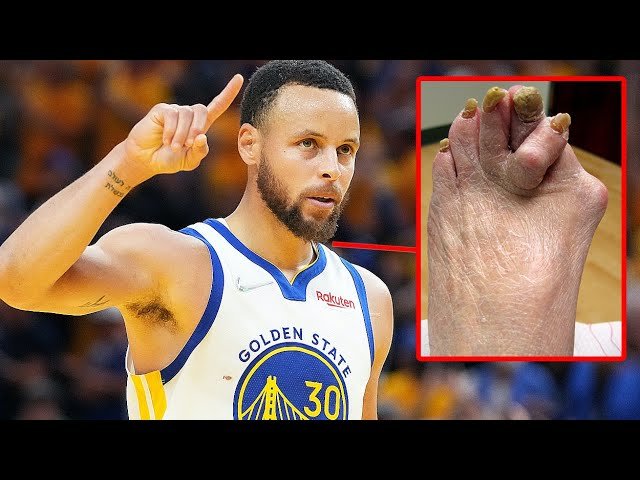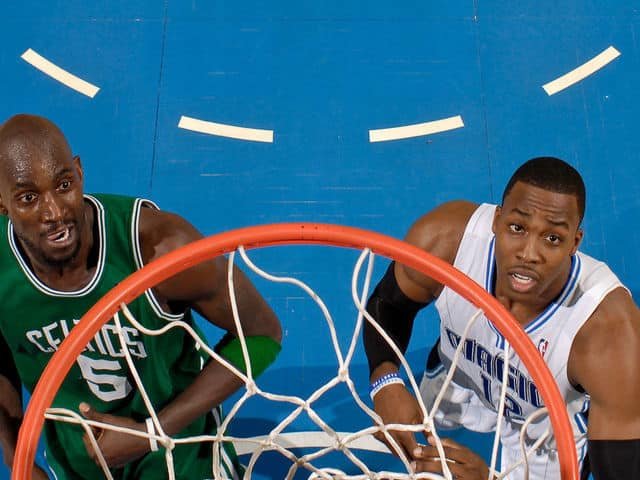Do NBA Players Tape Their Ankles? Yes, NBA players do tape their ankles. They do this for support and injury prevention.
Ankle injuries are common in basketball due to the fast-paced and high-impact nature of the game. Taping provides stability to the ankle joints, reducing the risk of sprains and strains. For NBA players, staying healthy is vital for their careers.
Taping ankles is a routine part of their pre-game preparation. It helps them perform at their best while minimizing the chance of injury. This simple yet effective method is key to their on-court success. In this blog, we will explore why ankle taping is essential and how it benefits NBA players. Stay tuned to learn more about this crucial aspect of basketball health and safety.
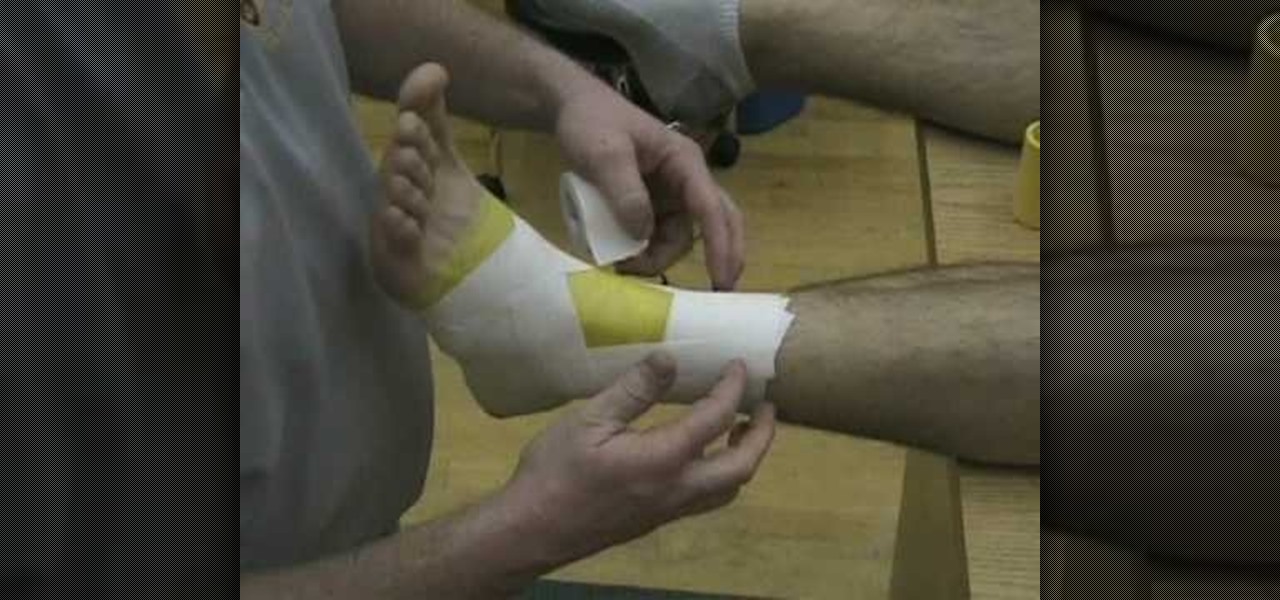
Credit: medical-diagonosis.wonderhowto.com
Importance Of Ankle Safety
The importance of ankle safety in the NBA cannot be overstated. Players push their bodies to the limit, and ankle injuries can be common. Taping ankles is one way to help prevent these injuries. It offers support and stability, reducing the risk of sprains and strains.
Common Ankle Injuries
Ankle sprains are the most common injury in basketball. They happen when the ankle twists or rolls. This can damage ligaments, causing pain and swelling. Another injury is the Achilles tendon rupture. This occurs when the tendon at the back of the ankle tears. It is serious and often requires surgery. Stress fractures in the foot and ankle can also occur. These are small cracks in the bone caused by repeated stress. They can be very painful and need rest to heal.
Impact On Performance
Ankle injuries can greatly affect a player’s performance. Pain and swelling can limit movement and speed. Players may not be able to jump as high or run as fast. Stability is also affected, making it harder to change direction quickly. This can reduce effectiveness on the court. Recovery from ankle injuries can take time. This means players might miss important games. Even after recovery, the ankle might still be weak. This increases the risk of re-injury.

Credit: giveandgopt.wordpress.com
Why Nba Players Tape Their Ankles
NBA players are known for their impressive skills and high-level performance on the court. One critical aspect of their preparation involves taping their ankles. This practice is essential for various reasons, ensuring they remain at the top of their game.
Injury Prevention
Basketball involves sudden starts, stops, and pivots. These movements put a lot of strain on the ankles. Taping the ankles helps prevent injuries by restricting excessive movement. This is crucial in a fast-paced game where every step counts.
Stability And Support
NBA players need stability to perform at their best. Ankle taping provides the necessary support, enhancing their balance and control. It acts like a brace, keeping the ankle in a stable position. This support is especially important during jumps and quick changes in direction.
The support from tape also helps players who have a history of ankle injuries. It allows them to play with confidence, knowing their ankles are protected.
Types Of Ankle Taping Techniques
NBA players often tape their ankles to prevent injuries. Different taping techniques offer specific benefits. Let’s explore the main types of ankle taping techniques used by NBA players.
Prophylactic Taping
Prophylactic taping is a preventive measure. It helps to avoid ankle injuries. This type of taping offers extra support to the ankle joint. Athletic trainers usually apply it before practices or games.
There are some common methods in prophylactic taping:
- Closed Basket Weave: This method provides high stability and is ideal for high-impact sports like basketball.
- Figure-Eight: This technique offers good support while allowing some mobility.
Prophylactic taping can significantly reduce the risk of sprains.
Functional Taping
Functional taping is used after an injury. It helps in rehabilitation and provides support during recovery. This technique allows controlled movement while protecting the ankle.
Common methods of functional taping include:
- Heel Lock: This method stabilizes the heel and prevents excessive motion.
- Low-Dye: This technique supports the arch and reduces strain on the ankle.
Functional taping can help athletes return to play more quickly.
Materials Used In Ankle Taping
NBA players often tape their ankles to prevent injuries. The materials used in ankle taping play a crucial role in providing support and stability. Let’s explore the common materials used in this process.
Athletic Tape
Athletic tape is a staple in ankle taping. This tape is usually made of cotton or a blend of cotton and synthetic fibers. It provides strong support and limits unwanted movement. Athletic tape is rigid, which helps keep the ankle in place.
Players prefer this tape for its durability. It withstands the high demands of basketball games. Athletic tape comes in various widths, allowing trainers to customize the support. It is applied directly to the skin or over pre-wrap for added comfort.
Elastic Bandages
Elastic bandages offer a different type of support. These bandages are made from stretchy materials like cotton and latex. They provide compression and flexibility. Elastic bandages can be adjusted for tightness, making them versatile.
Players use elastic bandages for mild support and swelling control. They are often used in combination with athletic tape. Trainers wrap these bandages around the ankle, ensuring even pressure. Elastic bandages are reusable and easy to apply.
Step-by-step Ankle Taping Process
Ankle injuries are common in the NBA. Many players tape their ankles to prevent injuries. Proper ankle taping can provide stability and support during games. Here, we will go through the Step-by-Step Ankle Taping Process.
Preparation
Before taping, it is important to gather all necessary materials. You will need:
- Athletic tape
- Pre-wrap
- Scissors
- Adhesive spray (optional)
Begin by cleaning the ankle area. This ensures the tape sticks well. If you have sensitive skin, apply a thin layer of pre-wrap. This protects your skin from irritation.
Application
Follow these steps to tape your ankle:
- Anchor Strips: Start with two anchor strips. Place one at the base of the calf and one around the foot, just above the arch.
- Stirrups: Apply three stirrups. Start from the inside of the anchor strip on the calf. Pull down under the foot and attach to the outside anchor strip.
- Horseshoes: Add three horseshoes. Begin at the anchor strip on the foot. Wrap around the heel and attach to the opposite side of the same anchor strip.
- Heel Locks: Apply two heel locks. Start at the front of the ankle. Wrap around the heel and return to the starting point.
- Closure Strips: Use closure strips to cover any remaining exposed areas. Make sure the tape is snug but not too tight.
Check for comfort and tightness. The ankle should feel supported but not restricted.
Proper taping can help prevent injuries and provide necessary support during intense activity.

Credit: www.youtube.com
Benefits Of Ankle Taping
NBA players often tape their ankles for several reasons. The primary goal is to provide stability and support during intense games. This can help prevent injuries and improve performance. Let’s dive into the benefits of ankle taping for NBA players.
Enhanced Mobility
Taping the ankles offers a blend of support and flexibility. This allows players to move quickly while keeping their ankles stable. The tape can limit unwanted movement that could lead to sprains. At the same time, it does not restrict necessary motions.
A table below summarizes the key points:
| Aspect | Benefit |
|---|---|
| Support | Limits harmful movements |
| Flexibility | Allows necessary movements |
Reduced Swelling
Ankle taping can also help reduce swelling. This is vital for injury prevention and pain management. The compression from the tape can prevent fluid buildup. This keeps the ankle from swelling excessively during a game.
- Prevents fluid buildup
- Manages pain
- Reduces excessive swelling
Players can perform better without the discomfort of a swollen ankle. This makes ankle taping a common practice among NBA athletes.
Drawbacks Of Ankle Taping
Ankle taping is common among NBA players for support and injury prevention. Yet, it has its downsides. Understanding the drawbacks can help make informed choices about using tape. This section explores some common issues like skin irritation and reduced blood flow.
Skin Irritation
Ankle tape can cause skin irritation. The adhesive can lead to rashes. Players with sensitive skin may experience itching or redness. Over time, tape can damage the skin’s outer layer. This can make the skin more prone to injuries. Frequent taping can worsen the irritation. Proper skin care is essential to reduce this risk.
Reduced Blood Flow
Ankle taping can limit blood flow. Tight tape restricts circulation. Reduced blood flow can lead to numbness. It may also cause cramping in the foot. This can affect performance on the court. Ensuring the tape is not too tight can help. Proper application techniques are crucial. Balancing support and circulation is key.
Alternatives To Ankle Taping
Many NBA players tape their ankles to prevent injuries. Taping provides support and stability. But some players prefer other methods. Here are some popular alternatives to ankle taping.
Ankle Braces
Ankle braces are a great alternative to taping. They provide strong support. Braces are easy to put on and take off. Unlike tape, they can be reused. This makes them cost-effective. Also, braces come in different sizes and styles. Players can choose the one that fits best.
Some common types of ankle braces include:
- Lace-up braces: These provide adjustable support. They are easy to tighten or loosen.
- Stirrup braces: These limit side-to-side movement. They are good for preventing sprains.
- Compression sleeves: These offer mild support. They also help reduce swelling.
Strengthening Exercises
Another alternative is doing strengthening exercises. Strong muscles around the ankle help prevent injuries. Many NBA players include these exercises in their routine.
Here are a few effective exercises:
- Calf raises: Stand on a step with heels hanging off. Raise up on toes and lower back down.
- Toe walks: Walk on toes for 30 seconds. Rest and repeat.
- Heel walks: Walk on heels for 30 seconds. Rest and repeat.
- Band exercises: Use resistance bands to strengthen ankles. Move foot in all directions against the band’s resistance.
These exercises build strength and improve balance. They also enhance flexibility. Making the ankles more resilient to injuries.
Frequently Asked Questions
Why Do Nba Players Tape Their Ankles?
NBA players tape their ankles to prevent injuries. Taping provides stability and support during intense movements. It helps avoid sprains and other ankle issues.
How Often Do Nba Players Tape Their Ankles?
NBA players typically tape their ankles before every game and practice. This ensures consistent support and reduces the risk of injury.
What Type Of Tape Do Nba Players Use?
NBA players use athletic tape. It’s strong and adhesive, providing reliable support. Some players also use specialized ankle braces for additional protection.
Does Ankle Taping Improve Performance?
Ankle taping helps prevent injuries, which can indirectly improve performance. By avoiding sprains, players can maintain peak physical condition and confidence.
Conclusion
Taping ankles is crucial for NBA players. It provides support and prevents injuries. Many players rely on this method for stability. Coaches and trainers recommend it for safety. Proper ankle care enhances performance on the court. So, taping is a common practice in the NBA.
Whether for prevention or recovery, it helps maintain player health. Next time you watch a game, notice the taped ankles. It’s a small step for big results.

